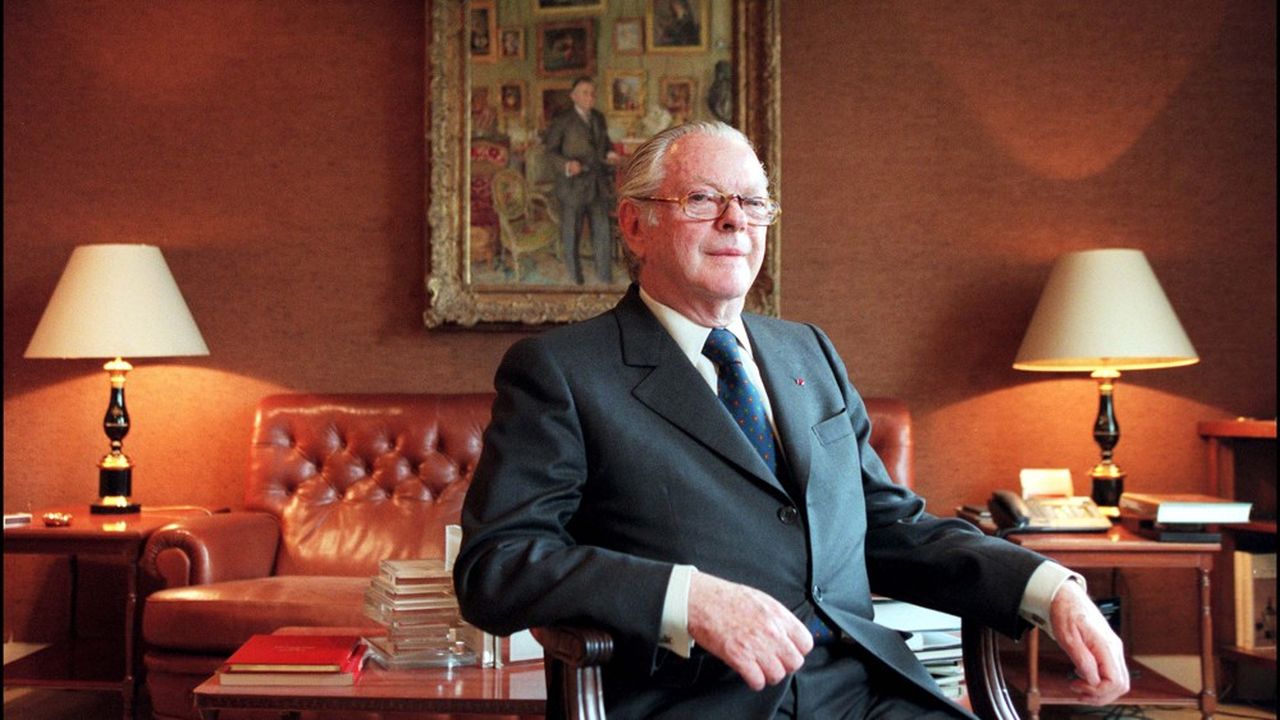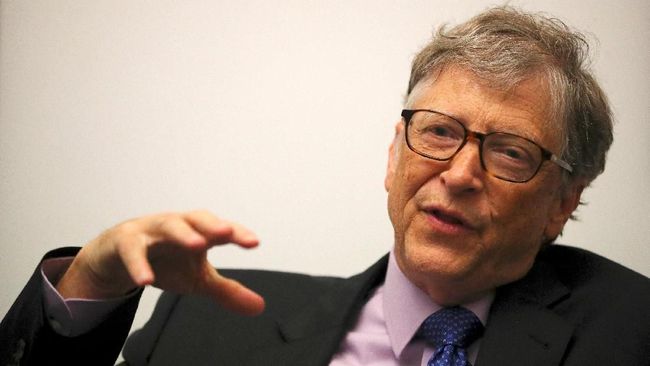Michel David-Weill, who died Thursday evening in New York at the age of 89, will have marked the history of Lazard and the business world like few French actors. “Michel led Lazard with infallible firmness, said Friday the investment bank he chaired from 1975 to 2001. His inspiration, his leadership and his vision define Lazard today. He should be buried in the Montparnasse cemetery in Paris, alongside the families of the bank’s main partners.
A direct descendant of Alexandre Weill, who left for the United States in 1856 to join Lazard Frères, Michel David-Weill managed to unify the New York, Paris and London branches under the same roof, making the family investment bank a essential pillar of French capitalism, but also transatlantic. The influence of this patron and art collector, born into a Jewish family before being baptized and brought up in the Catholic faith, has gone far beyond the financial world, as evidenced by the many tributes aroused by his death. “The President of the Republic salutes a visionary player in the economic world, who lavished his talents and his gifts on our French companies, our heritage and our arts”, declared the Elysée in particular in a press release. A look back at six key moments in an extraordinary life and career.
His first strokes of brilliance
It is difficult to summarize the trajectory of this heir, sometimes presented as the “Sun King” of finance, who shared his life between Paris, New York, London and his properties, including his villa “Leeward” on Cap d’Antibes, where he hosted the cream of business, politics and the arts in the summer. Born on November 23, 1932, the son of Pierre David-Weill and Berthe Haardt studied at the Lycée Français in New York, then at Sciences Po Paris before joining the bank in 1956. He is André Meyer, one of the bankers the most brilliant of his generation, nicknamed the “Picasso of finance”, who introduced him to American affairs.
Portrait of the director of the Lazard bank Michel David-Weill, October 4, 1968. KEYSTONE-FRANCE
His baptism of fire? The hostile takeover of Lazard Frères in 1964 on Franco Wyoming, a company with oil assets straddling France and the United States. Daring, the operation shocks New York but its success will inspire Michel David-Weill. Returned to Paris, four years later he advised the small Lyonnais glassmaker Boussois-Souchon-Neuvesel (BSN) when he launched a hostile takeover bid for Saint-Gobain, five times bigger than him.
The operation, which will divide the Parisian elite between the ancients and the moderns, ends up failing. But it gave birth to a business relationship and an unwavering friendship between Michel David-Weill and the president of BSN and future founder of Danone, Antoine Riboud. It will also install the authority of the heir in the face of associates with recognized personalities such as Antoine Bernheim, Felix Rohatyn or Bruno Roger.
The beginning of the reign
On the death of his father, Pierre David-Weill, in 1975, Michel took over the presidency of Lazard Paris, then two years later, the presidency of the bank in New York. In September 1979, André Meyer died. In a scene worthy of a film, described by Martine Orange in her book “These Gentlemen of Lazard” (Albin Michel, 2006), Michel David-Weill takes advantage of the burial of his mentor in the Montparnasse cemetery to approach Sir Ian Fraser, the president of Lazard London, a rapprochement of the three houses.
In the procession, the members of the bank do not believe their eyes, says the journalist. Michel David-Weill is in the process of taking power, without wasting a second… “behind the coffin of André Meyer”. “I’m the boss because I’m not afraid”, explained later in an interview the man who said he was fascinated by the seizure of power by Louis XIV.
The heir to the Lazard house is not an exceptional banker, but he knows how to use his address book and his political sense to continue to grow the bank, which in the 1980s became one of the world leaders. in the area of mergers and business advisory. Michel David-Weill inherited at this time his nickname of “last emperor of Wall Street”.
The “Ministry bis of Industry”
The cohabitation of 1986 opens a new era for Lazard and its CEO. The Prime Minister, Jacques Chirac, and his Minister of Economy and Finance, Edouard Balladur, are launching a great wave of privatizations. And the prestigious investment bank, which unlike its rivals Paribas and Rothschild had managed to escape the nationalization movement, knows how to take advantage of it.
Investment banking is about managing individuals. All of Lazard’s associates were exceptional. To choose was to kill. It would have been to renounce the merits of all the others.
Michel David-Weill
Associated with all the major privatization operations, including the first and most symbolic, that of Saint-Gobain, it even became “the second Ministry of Industry”, as Martine Orange writes in her book. “Not a deal, not a capital increase, not a movement” is not done without Lazard, who will also pilot the opening of the capital of Renault and the IPO of France Telecom. Between 1986 and 1988, the bank saw its profits in France multiplied by three.
It was also in the 1980s that Lazard, under the direction of Michel David-Weill, participated in the construction of the industrial empires of Bernard Arnault, François Pinault and Vincent Bolloré, and their fortune. The bank develops, thanks to the financial ingenuity of Antoine Bernheim, a cascading holding system that allows the leading shareholder to control an empire with a reduced capital outlay. A financial innovation that will be one of the hallmarks of the house.
The talent drain
But the autocratic management of Michel David-Weill also has its limits. Admittedly, he knows how to spot talents, often highly qualified (X, ENA, Inspection des finances, etc.) and passed through the national palaces like Matthieu Pigasse or Anne Lauvergeon. But rather than governing, he reigns by maintaining rivalries.
“We would have liked me to show favouritism,” said the man who received the partners one by one each year in his office to solemnly announce their lavish bonuses. I have always refused. Investment banking is about managing individuals. All of Lazard’s associates were exceptional. To choose was to kill. It would have been to renounce the merits of all the others. »
But in the 1990s, Michel David-Weill experienced major departures. In quick succession, several banking stars are jumping ship, giving up tremendous influence and pay. This is the case of Jean-Marie Messier, who joins another legend of French capitalism, Guy Dejouany, at Générale des eaux. Or Felix Rohatyn, pillar of the New York structure.
In question, in particular: the rise to power of Edouard Stern, heir to the eponymous banking family and married to his daughter Béatrice. The brilliant but controversial banker was seen as the heir apparent to Michel David-Weill. He will leave the bank in 1997, before being assassinated eight years later. But the damage is done. The haemorrhage of talent is weighing on business, while the eternal rival, Rothschild, is gaining market share.
The Battle of Imperial Street
Apparently, the transaction is purely technical. In April 2001, Michel David-Weill completed the final restructuring of Lazard’s control structure. He merges Eurafrance and Azeo, with a view to uniting the three houses in Paris, New York and London. This is the birth of Eurazeo, an investment company which owns 17% of Lazard, and shares in Generali, Mediobanca and Danone.
But this operation is above all the epilogue of a showdown that the “emperor” almost lost. A fight against Vincent Bolloré, who with the help of Antoine Bernheim, spotted a flaw in the control structure. For months, the businessman, benefiting from the tacit support of a few investment funds and the Swiss banking giant UBS, bought shares in Rue Impériale de Lyon, the umbrella holding company of the Lazard galaxy. He ends up holding 31% and finds himself in a position of strength. It is the Crédit Agricole which will come to free the patriarch by buying back his shares from Vincent Bolloré for nearly 4 billion francs, approximately double his initial investment.
Whatever happens next, I can never get rid of the idea that this house is mine.
He will not consider leaving Eurazeo until the financial crisis. The complete exit of Crédit Agricole from Eurazeo in 2017 will trigger a new raid, that of rival Tikehau. A new long-term investor takes over, the Decaux family, which buys the shares of the green bank.
Entrance to Wall Street, the last battle
“They are going to kill Lazard. Michael is crazy. He lets them. In the fall of 2004, Antoine Bernheim, the former kingmaker of European capitalism and ex-associate of Lazard, did not want to believe that Michel David-Weill let a Wall Street icon, Bruce Wasserstein, entrust the destiny of the powerful family investment bank in the hands of the Stock Exchange.
This is the red line that the monarch of finance has always set: “The bank is not listed and will not be”, he declared in 2000. But to this dolphin, who has just sold his Wasserstein Perella boutique at the German bank Dresdner Bank, Michel David-Weill will have given up everything to convince him to write the rest of the history of the investment bank and enthrone him. Until the first wants to definitively oust the second.
By dint of lavish bonuses and expensive recruitment of stars by Bruce Wasserstein, Lazard finds himself taken by the throat and records the first losses in its history. You have to raise capital, insists the new master of Lazard, who knows that listing is also a way to erase the bank’s family DNA. “To quote the house is to engage it towards trivialization”, opposes Michel David-Weill. The passes of arms are becoming more and more violent within the house.
 –
–Bruce Wasserstein (in the center of the podium), during the introduction of the Lazard bank on the New York Stock exchange, May 5, 2005.HO / NYSE / AFP
“I will make you rich”, promises Bruce Wasserstein to the partners, opposing the “workers” of the bank to the “capitalists” who own it and receive generous dividends each year. The investment bank goes public on May 5, 2005. The family is diluted and the American banker becomes sole master on board for only a short time. He died suddenly of a heart attack four years later.
For Michel David-Weill, the time has come to move away from Lazard. He then fell back on Eurazeo, where he held the chairmanship of the supervisory board until last April, helping to make it a prosperous investment company. But in his mind, the link with the bank that he will have helped to bring to the top will never really be broken, as he confided in 2005: “Whatever happens next, I will never be able to get rid of the idea that this house is mine. »
–


